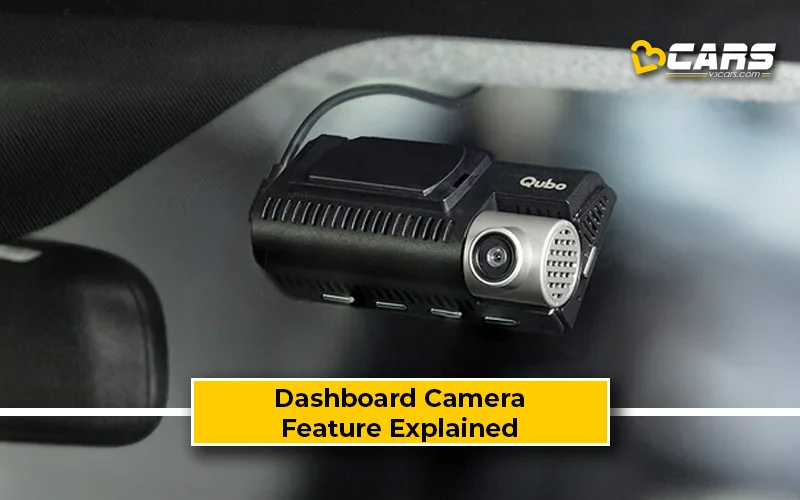Dashboard Camera – Feature Explained
In today’s fast-paced world of driving, vehicle safety isn’t just about airbags anymore. Dashcams, or dashboard cameras, have become essential companions on the road, quietly documenting every trip. Whether you need a reliable witness in case of an accident, a deterrent against theft, or just want to save memorable drives, knowing the different types of dashcams can help you pick the one that best protects you and your car.

What Is A Dashcam?
A dashcam, short for dashboard camera, is a small, on-board camera mounted on a car’s dashboard or windshield. Its primary function is to continuously record video footage of the road ahead, and sometimes the cabin or the rear, while the vehicle is in operation. These recordings can be used as evidence in the event of an accident, a dispute, or even a hit-and-run incident.
How Do Dashcams Work?
The concept of a dashcam is fairly simple: mount a dashcam near your windshield using either a tape or suction mount, ensuring it has an unobstructed view of the road. As you drive, it continuously records your journey. If you ever need the footage, most dashcams come with a companion app that lets you access and download clips directly to your smartphone.
Most dashcams operate on a simple yet effective principle:
- Power Source: Dashcams are powered by the car's 12V power outlet (cigarette lighter socket) or hardwired into the car's electrical system that provides constant power or power only when the ignition is on.
- Continuous Recording: Once powered on, the dashcam begins recording video to a removable memory card. Many dashcams use a “loop recording” function, meaning when the memory card is full, it automatically records over the oldest footage.
- Sensors: Dashcams are usually equipped with G-sensors or accelerometers. This sensor detects sudden impacts, hard braking, or rapid acceleration. When a significant event occurs, it automatically saves the current video into a separate folder and prevents it from being overwritten during loop recording. Some dashcams include motion sensors that can trigger recording even when the car is parked, if movement is detected around the vehicle. Such dashcams require a hardwired connection.
- Display: Higher-end dashcams have a small built-in screen for viewing live footage, reviewing recordings, and adjusting settings. Others are screen-less and rely on a smartphone app for viewing via Wi-Fi.
- GPS: Higher-end dashcams may include GPS functionality to record vehicle speed and location data, which can provide additional context in case of an incident.
What Are The Different Types Of Dashcams?
Dashcams come in various configurations to suit different monitoring needs:
- Front Dashcam (Single-Channel): Featuring a single camera mounted on the front windshield, a single-channel dashcam records only the view ahead of the vehicle. Single-channel or front dashcams are the most affordable dashcam options available in the market.
- Front and Rear Dashcam (Dual-Channel): A dual-channel dashcam consists of a front-facing camera and a separate camera that mounts on the rear windshield (or sometimes integrated into the front unit for a cabin view). It simultaneously records both the front and rear views. These type of dashboard cameras offer coverage of both ends of the car, which comes in handy for rear-end collisions or incidents involving vehicles behind you. However, these dashcam are slightly more expensive and their installation process is more complex as well.
- Front, Rear, and Cabin Dashcam (Triple-Channel): Featuring a front camera, a rear camera, and an additional camera pointing inwards to record the vehicle’s cabin, these dashcams offer complete recording coverage around and inside the vehicle, ideal for ride-sharing drivers or for monitoring activities within the car.
- Mirror Dashcams: These dashcams are designed to clip over or replace the existing rearview mirror, with the screen integrated into the mirror’s surface. They feature a front camera built into the mirror assembly and may support an external rear camera. These types of dashcams are more discreet. However, they can be heavier than traditional dashboard cameras and in my personal experience, the quality of the footage is sub-par compared to a dedicated dashcam.
What Are The Pros And Cons Of Dashcams?
Here are the pros, or advantages, of dashcams:
- Evidence in accidents: Provides video evidence in case of collisions, helping determine fault for insurance claims or legal disputes.
- Deters criminal activity: Can deter theft, vandalism, or road rage incidents.
- Parking surveillance: With motion detection and parking mode, they can record events around your parked car.
- Capture scenic drives: Records memorable moments from road trips and scenic routes.
- Encourages safer driving: Drivers may feel more cautious knowing their actions are being recorded.
Here are the cons, or disadvantages, of dashcams:
- Privacy concerns: Recording can raise privacy issues, especially with cabin-facing cameras or continuous parking surveillance.
- Memory card management: Requires regular checking and formatting of memory cards, and cards can fail.
- Installation complexity: Dual or triple-channel dashcams require more wiring.
- Power consumption: Parking surveillance modes can drain the car’s battery if not properly hardwired with power management.
- Legality: While legal in India, regulations regarding recording and data usage can vary by region.
Can Dashcams Be Installed From The Aftermarket?
Yes, dashcams are predominantly aftermarket accessories. Most cars do not come with factory-fitted dashcams as standard. Aftermarket dashcams are widely available and can be installed in almost any vehicle.
Basic front dashcams are “plug-and-play” using the 12V socket. Dual or triple-channel systems involve routing cables through the car’s interior trim. Hardwiring kits for continuous power and parking surveillance modes are usually sold separately.
What Is The Cost Of An Aftermarket Dashcam?
The cost of an aftermarket dashcam in India varies widely based on type, brand, video quality, and features:
- Basic Front Dashcam: Rs. 2,000 - Rs. 5,000
- HD Quality Front & Rear Dashcam: Rs. 5,000 - Rs. 15,000
- Advanced/Premium Dashcams (with GPS, Wi-Fi, Cloud): Rs. 15,000 - Rs. 30,000+
- Professional Installation: Rs. 500 - Rs. 2,000 (depending on complexity, hardwiring).
What Are Some Affordable Cars In India That Offer Dashcams?
While most dashcams are aftermarket, some affordable cars in India have started offering them in their higher variants:
- Hyundai Exter SX(O) Connect
- Hyundai Creta Adventure Edition
- Hyundai Venue Knight Edition and N Line
Some manufacturers offer it as a dealer-fitted accessory in festive season-specific special edition variants. Examples from the past include the Skoda Slavia Ambition Plus, Renault Triber and Kiger Urban Night edition, and others.
Also Read: High Beam Assist – Feature Explained
Helpful Tools:
Fuel Cost Calculator for Cars – Know your monthly fuel expense based on usage and mileage
Car On-Road Price Calculator – Convert ex-showroom to on-road price for any city
Sell Used Car Online – Enter your car and contact details to get an instant price estimate and book a free inspection with our partner network


0 Comments